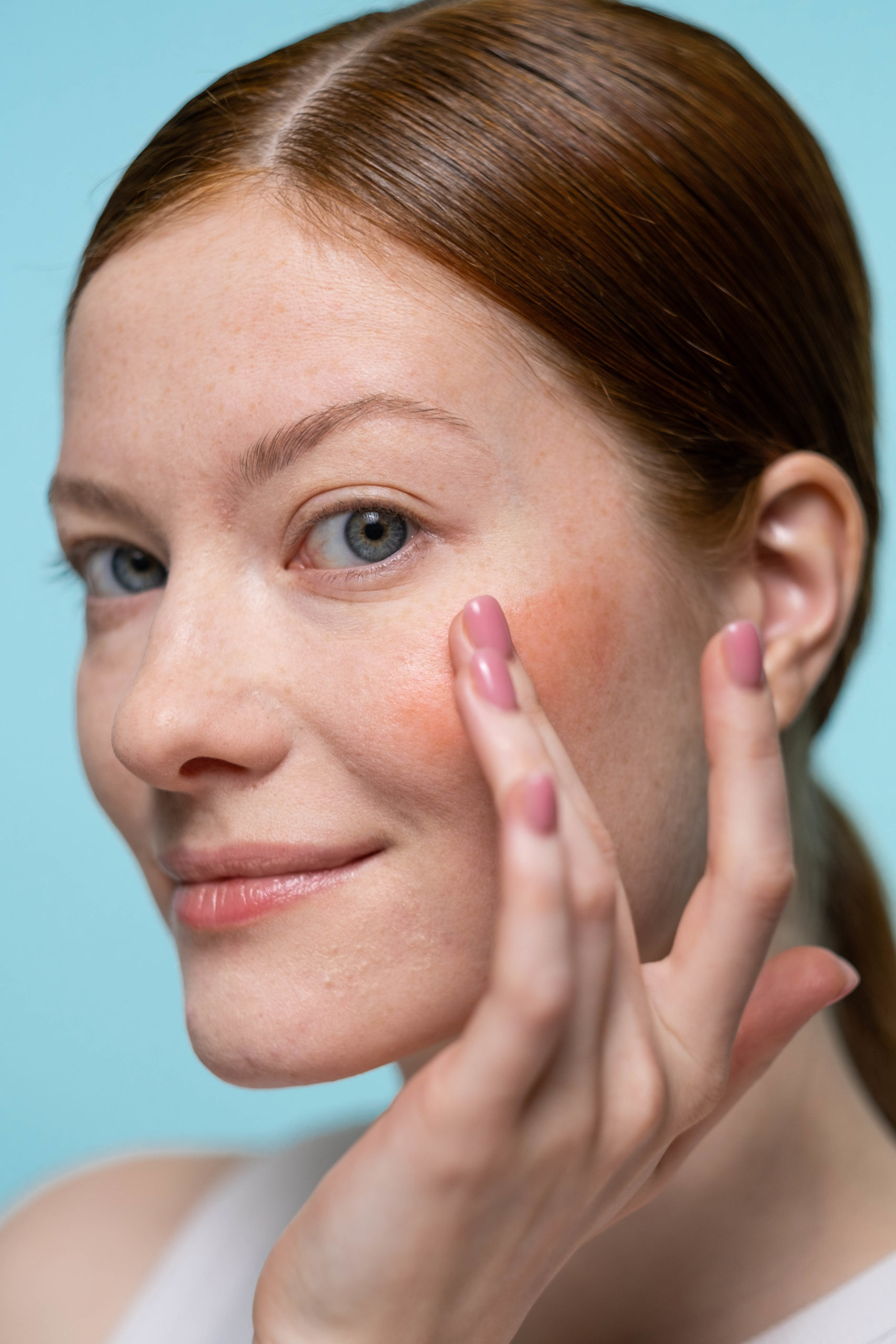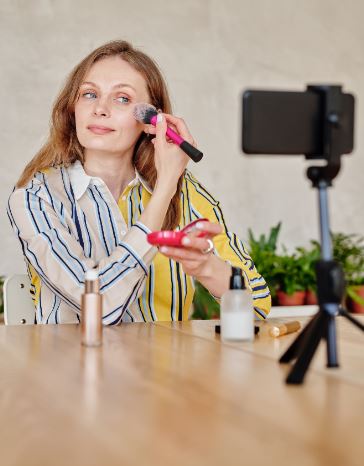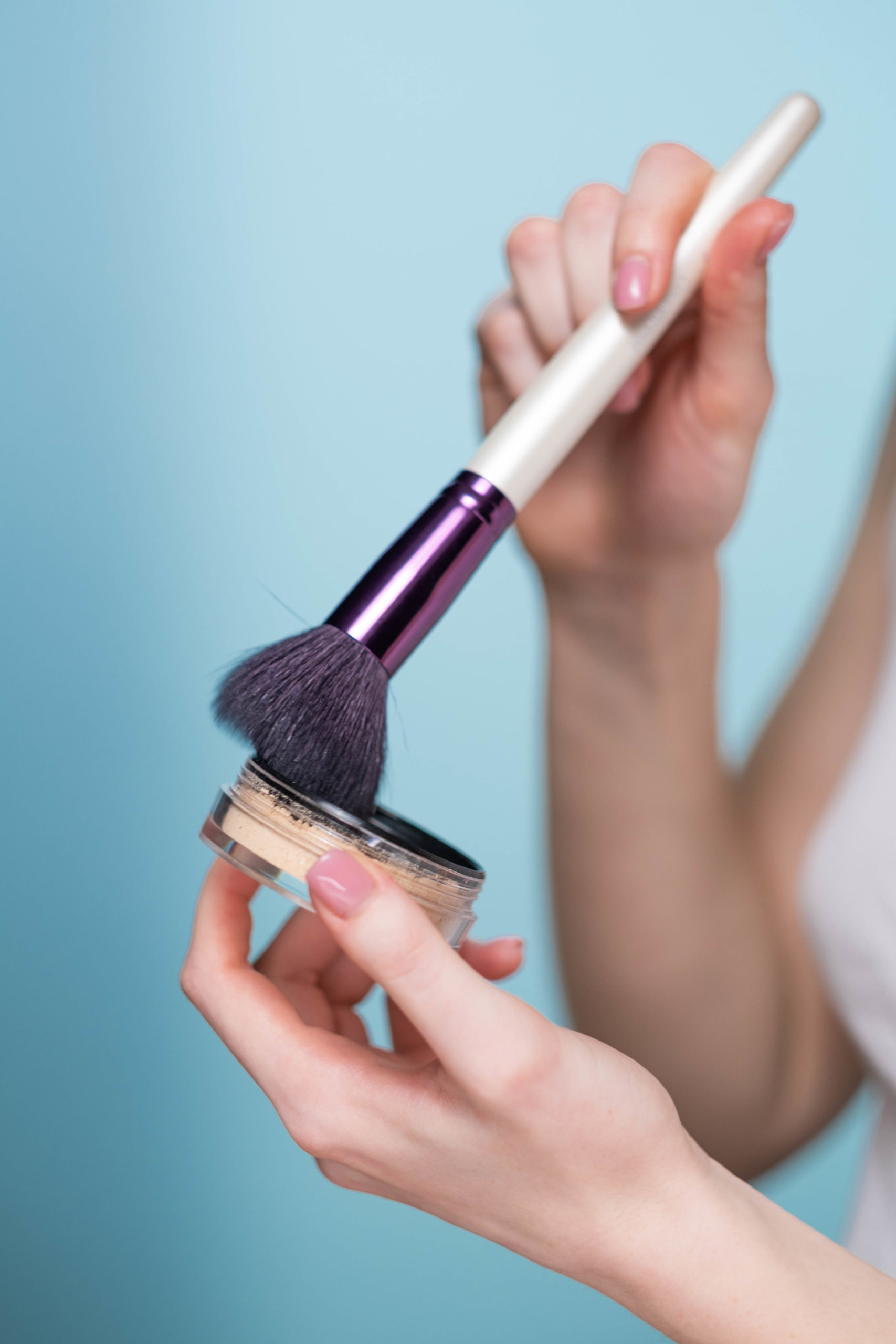When it comes to cosmetics, blush is one of those items people either adore or loathe. Some say it’s necessary for a more natural appearance, while others say it’s not. Blusher, when applied correctly, gives skin a healthy glow while also enhancing the features of the face. It’s a must-have for each woman’s make-up kit. Take a look at the many different ways that blush may be used and how it should be applied.
Blush and its uses
Makeup called blush or rouge is applied to the cheeks using a makeup brush to balance out skin tone or give additional color to the complexion. As a powder, it is the most prevalent, but it can also be found in creams and liquids. Occasionally, blush is employed to make the face appear longer or wider.
According to some sources, blush may have originated in Egypt, like many other types of makeup. Some verses in the Old Testament refer to the wearing of various kinds of make-up. In the past, ancient people used blush on their lips as well as their cheekbones. In the past, men have worn blush in the same way.
Blush should be applied to the cheeks to offer warmth and a hint of color. Use it sparingly, however, as blushes are frequently highly pigmented and can go on heavy if you’re not careful when applying them.
Blush is a great way to give a little color to the cheeks. Looks great on people who want to look fresh-faced. During the fall and winter, blush can offer a rosy glow, and it can also work well in the spring.
Complementing face shape with blush
Because blush is supposed to draw attention to your features, it is important to consider your facial bone structure when applying it.
Heart-shaped face:
People with heart-shaped faces have high cheekbones and a small chin. We need to soften the corners to make your face appear more oval because it can appear pointed. Start at the outer corner of your ear and work your way down to the outer corner of your eye while applying blush. As a bonus, add a little color to your temples, in the center of your forehead, to assist balance your forehead and chin’s breadth.
Square face:
Square faces have a forehead and cheekbones and chin nearly equal in width. When applying your blush, apply it slightly below the cheekbones to help define them. Softening the borders of your face can be achieved by applying a blush to the hairline.
Round face:
A person with a round face has a face that is as long as it is wide. Matte blushers are better for you than pearlized or highly reflective ones because they reflect light and provide the appearance of a rounder face. Make a sweeping motion from the ear to the mouth with your blush. Make your face appear longer by applying a small amount of blush to the chin and blending it in thoroughly.
Oblong/long face:
Faces that are oblong or long, also referred to as “rectangular,” have characteristics in common with those that are oval or square in shape. There is only one noticeable difference between the two: the face is longer and narrower than before. The width of your brow, cheekbones, and jawline will be nearly identical. The outer corners of your eyes are a great place to apply blush. Keep the blush at or above the tip of the nose at all times. This will assist you in condensing the length of your descriptions.
Triangular-shaped face:
Your chin will be thin and pointed, and your high cheekbones will be the most apparent feature if you have a triangular-shaped face. Blush should be applied to the cheekbones in a sideways V. To achieve a natural-looking flush, start at the base of your cheekbones and work your way up to your temples. As a result, the breadth of your forehead will appear more proportionate to the rest of your face.
Oval face:
A broad cheekbone and a forehead that is somewhat wider than the chin characterize oval features. Apply your blush on your cheeks with a light, sweeping motion. It’s easy to locate your cheekbone with your fingers. To make your cheekbone appear higher, place the color right above the bone rather than toward the hollow below it.
Choosing the blush

The key to getting the perfect blush is not to look at the color of the blush, but rather to consider your skin tone while making your selection. You’re more likely to select colors that enhance your features rather than those that detract from your appearance if you follow this strategy.
Your skin tone is the most important factor in picking a blush color. Once you’ve done that, think about your subtext. Warm, cold, and neutral are the three options. You may figure out which category your skin belongs to in a number of ways. Choosing a blush color might be tricky if you’re looking for something that either stands out or blends in with your skin tone.
Wearing a white t-shirt is the first step to discovering your undertone. If your skin seems pink or rosy, you have a cool skin tone. Warm undertones give you a yellower complexion. In addition, if you appear better in shades of off-white rather than pure white, you are most likely a warm-toned individual. You have a neutral undertone if you look good in both colors.
Checking your veins can also help you figure out what your undertone is, especially around your neck and face. Cool undertones can be seen in people with blue veins. If your veins seem green, they are a sign of warmth.
Here, we’ll take a look at the best blush hues for your skin tone and undertones. Choose a blush with the same undertone as your skin tone if you want a natural look. It’s also crucial to keep in mind that a healthy complexion is the foundation of any successful makeup application. For a flawless blush application, you must take care of your skin.
Opt for the opposite undertone of your skin if you want a bold look that stands out. So, if you have olive skin, go with a warm blush for a more natural effect and a cool blush for a more dramatic one if you have a warm skin tone.
Fair skin:
Fair-skinned women should go for pastel shades like baby pink or peach. Because these are the most natural-looking blush tones, pale pinks and peaches appear best on fair skin. The sheerness of anything, especially plum, works beautifully on fair complexion since it isn’t so overpowering.
Medium skin:
Medium skin tones can benefit from an apricot or mauve tint. If you have medium skin, try apricot because it adds a delicate hint of warmth while mauve adds a bolder feeling of depth.
Olive skin:
If you have olive complexion, opt for a bronze or rose-colored blush. Olive skin might benefit from a gentle, natural flush from rose. Adding bronze blush brightens and provides a hint of warmth to the complexion.
Dark skin:
If you have a dark skin, choose raisin, brick, or bright tangerine. If you have darker skin, bold hues like raisin or brick are the greatest way to bring out your best features without going over the top. If you like a more subdued look, a bright tangerine blush will work.
Oily skin:
Powder blushes are ideal for those with oily to average skin. An excellent option for almost any skin type, powder blush applies smoothly and mattifies the complexion. For extended periods of time, powder blush is likely to stay on without needing to be reapplied because of its staying power.
Dry skin:
If your skin is dry or sagging, opt for a cream blush. You may keep your skin from seeming overly dry by applying a cream blush to it. When applied, it looks a touch dewy and lightweight, which lends itself to a more natural-looking blush.
Blush application

The next step is to determine how to apply your blush once you’ve decided on the shade and kind that you want to use. To use powder blush, follow these steps:
- Never use the blush’s included brush. These are usually too little to apply the product properly. Make sure you have a high-quality blusher brush before you begin.
- Smiling at your reflection in the mirror is the second step. Make sure you can see where the apple of your cheek is by using this technique.
- Make sure you shake off any extra powder before applying it to your face. Using quick up and down strokes, brush from the apple of your face toward your ear.
- Finally, apply the blusher and mix it in. To accomplish this, use a tissue to blot the area with a horizontal stroke over the vertical ones.
Take the following steps for creams and gels:
- Begin by looking in the mirror and chuckling at yourself. You’ll be able to view your cheek’s apple this way.
- Using your fingertips, apply a small quantity into the apple of your cheek. Make sure you take the time to do this right.
If blusher was ever a concern of yours, you may put that worry to rest. Try with several shades of blusher, but keep in mind that it should be light and natural-looking.
Conclusion
A little bit of blush may make all the difference in the world when it comes to your beauty appearance. Even if you don’t think you need it, there are numerous advantages to wearing it. A little bit of blush can make you appear more awake and energized, and it can also lend dimension to your face.
Try it out even if you aren’t sure if you need blush! How much of an impact it can have on your life is something you may not have expected.
